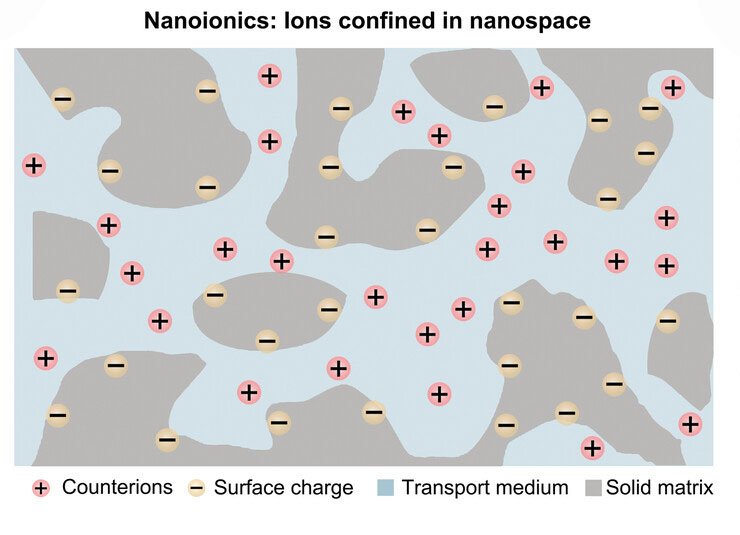Nanoionics: Revolutionizing Energy Storage and Conversion
What is Nanoionics?
Nanoionics is an emerging field that combines the principles of nanoscience and ionic transport to develop advanced materials and devices for energy storage and conversion. It focuses on the study and manipulation of ionic species, such as lithium ions, at the nanoscale to achieve enhanced performance, miniaturization, and novel functionalities in batteries, fuel cells, and other electrochemical systems.

Key Concepts in Nanoionics
Nanoionics revolves around several key concepts that distinguish it from conventional ionic transport:
- Nanoscale Confinement: Nanoionics exploits the unique properties that arise when ions are confined within nanoscale structures, such as nanoparticles, nanowires, or thin films. This confinement can lead to enhanced ionic conductivity, faster charge transport, and improved stability compared to bulk materials.
- Interfacial Effects: The high surface-to-volume ratio of nanomaterials in nanoionics results in a significant influence of interfacial effects on ionic transport. The interfaces between the nanomaterials and the electrolyte can be engineered to facilitate ion exchange, reduce charge transfer resistance, and improve device performance.
- Ionic Selectivity: Nanoionics aims to achieve high ionic selectivity by designing materials with precise pore sizes, surface functionalities, and chemical compositions. This selectivity allows for the preferential transport of specific ionic species while excluding unwanted ions, leading to improved efficiency and reduced side reactions.
Categories of Nanoionics
Nanoionics can be broadly categorized into four main areas based on the type of systems and applications:
Biological Nanoionics
Biological nanoionics focuses on the study and application of controllable ion transport in protein nanopores. It explores the transport of both actively and passively transported ions in these nanoscale biological systems. The main functions of biological nanoionics include energy conversion and information transduction.
Artificial Nanoionics
Artificial nanoionics involves the development of controllable ion transport in artificial devices. It encompasses both solid-state nanoionics and liquid nanoionics. The interface size in artificial nanoionics ranges from the single-atom level to hundreds of nanometers. Key functions of artificial nanoionic devices include supercapacitors, memristors, separation, and more.
Hybrid Nanoionics
Hybrid nanoionics combines aspects of biological and artificial nanoionics, enabling controllable ion transport in hybrid devices. These devices operate at the nanoscale, with effective sizes ranging from the single-atom level to hundreds of nanometers. A main function of hybrid nanoionics is bridging biological and artificial neural networks.
By exploring these different categories of nanoionics, researchers can leverage the unique properties and functions of each area to develop advanced materials and devices for a wide range of applications, from energy storage and conversion to information processing and neural interfaces.
Why Nanoionics?
Nanoionics offers an alternative approach to conventional nanoelectronics, which relies on electron transport. Ions have several advantages over electrons:
- Ions have a smell and color, allowing for additional sensing capabilities.
- Different ions have various valencies, sizes, and polarizabilities, enabling a wide range of properties and functionalities.
- Ions have larger mass compared to electrons, which helps avoid electromagnetic disturbance in nanoionic devices.
By exploiting these unique properties of ions at the nanoscale, nanoionics opens up new possibilities for advanced materials and devices beyond the limitations of conventional electronics.
Nanoionic Materials
Nanoionic materials are the building blocks of nanoionic devices and play a crucial role in determining their performance. Some key classes of nanoionic materials include:
Nanostructured Oxides
Nanostructured oxides, such as lithium titanate (LTO), lithium iron phosphate (LFP), and lithium cobalt oxide (LCO), are widely used in lithium-ion batteries. These materials offer high ionic conductivity, stable crystal structures, and fast charge/discharge rates. By nanostructuring these oxides, researchers can enhance their electrochemical properties and improve battery performance.
Solid Electrolytes
Solid electrolytes are a crucial component of nanoionic devices, enabling the transport of ions between electrodes. Nanostructured solid electrolytes, such as lithium garnet (LLZO) and lithium lanthanum titanate (LLTO), exhibit high ionic conductivity, chemical stability, and resistance to dendrite formation. These materials are promising candidates for all-solid-state batteries and other solid-state ionic devices.
Nanocomposites
Nanocomposites combine different nanoionic materials to achieve synergistic properties. For example, combining nanostructured cathodes with solid electrolytes can lead to high-performance, safe, and long-lasting batteries. Nanocomposites can also be designed to enhance ionic selectivity, mechanical stability, and thermal properties of nanoionic devices.
Applications of Nanoionics
Nanoionics has a wide range of applications in energy storage and conversion devices:
Batteries
Nanoionics plays a crucial role in the development of next-generation batteries, such as lithium-ion, sodium-ion, and all-solid-state batteries. By engineering nanostructured electrodes and solid electrolytes, researchers can achieve higher energy density, faster charging rates, and improved safety compared to conventional batteries.
Fuel Cells
Nanoionics is also applied in the development of advanced fuel cells, such as solid oxide fuel cells (SOFCs) and proton exchange membrane fuel cells (PEMFCs). Nanostructured electrolytes and electrodes can enhance the performance and durability of fuel cells, enabling efficient and clean energy conversion.
Supercapacitors
Nanoionics contributes to the development of high-performance supercapacitors, which are energy storage devices that bridge the gap between batteries and conventional capacitors. Nanostructured electrodes with high surface areas and ionic conductivity can significantly increase the energy and power density of supercapacitors.
Challenges and Future Perspectives
Despite the promising potential of nanoionics, several challenges need to be addressed for its widespread application. One of the main challenges is the scalability and reproducibility of nanoionic materials and devices. The synthesis and assembly of nanostructured materials with precise control over their properties and interfaces remain a significant hurdle.
Future research in nanoionics will focus on the development of novel nanoionic materials with enhanced ionic conductivity, stability, and selectivity. The integration of computational modeling and machine learning techniques will accelerate the discovery and optimization of nanoionic materials and devices. Additionally, the exploration of multicomponent nanoionic systems and the integration of nanoionics with other emerging technologies, such as flexible electronics and wearable devices, will open up new opportunities for advanced energy storage and conversion applications.
Further Reading
Advanced Science, Nanoionics from Biological to Artificial Systems: An Alternative Beyond Nanoelectronics
Physical Chemistry Chemical Physics, Nanoionics: ionic charge carriers in small systems
